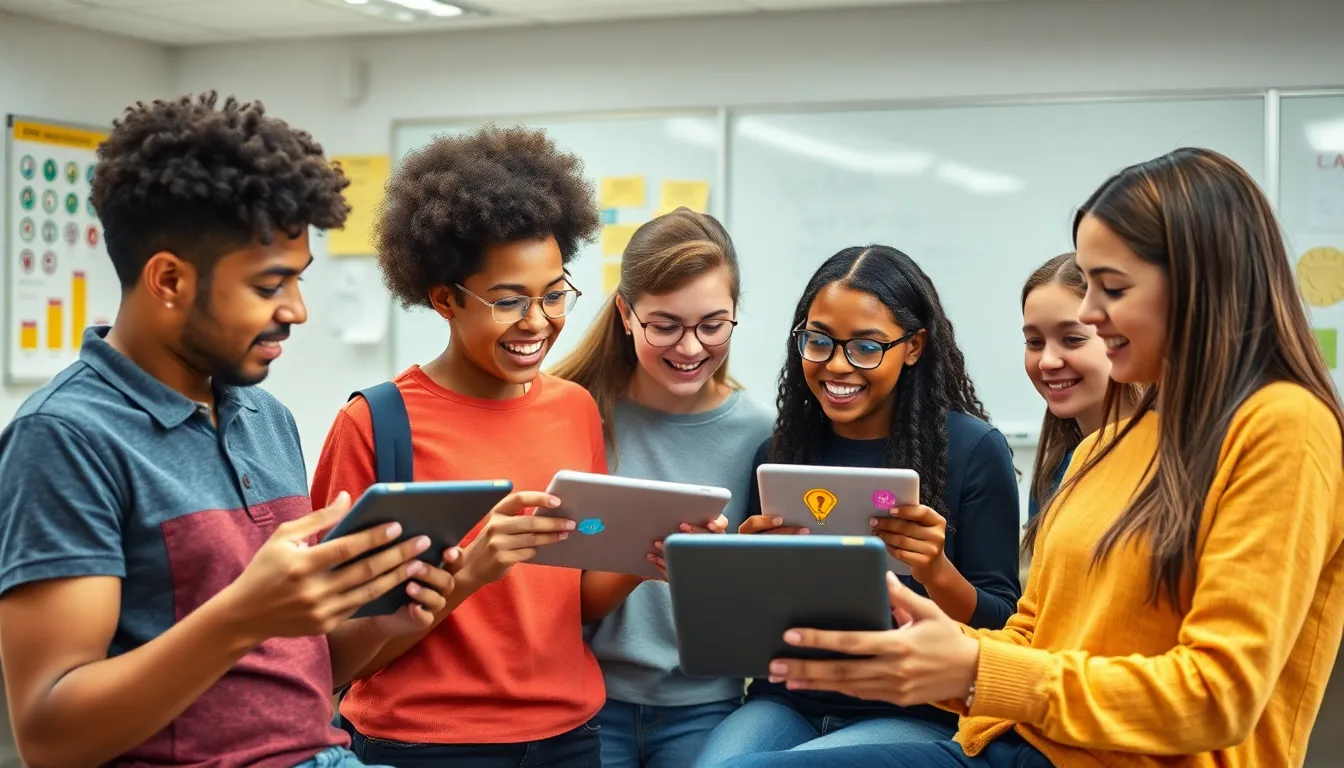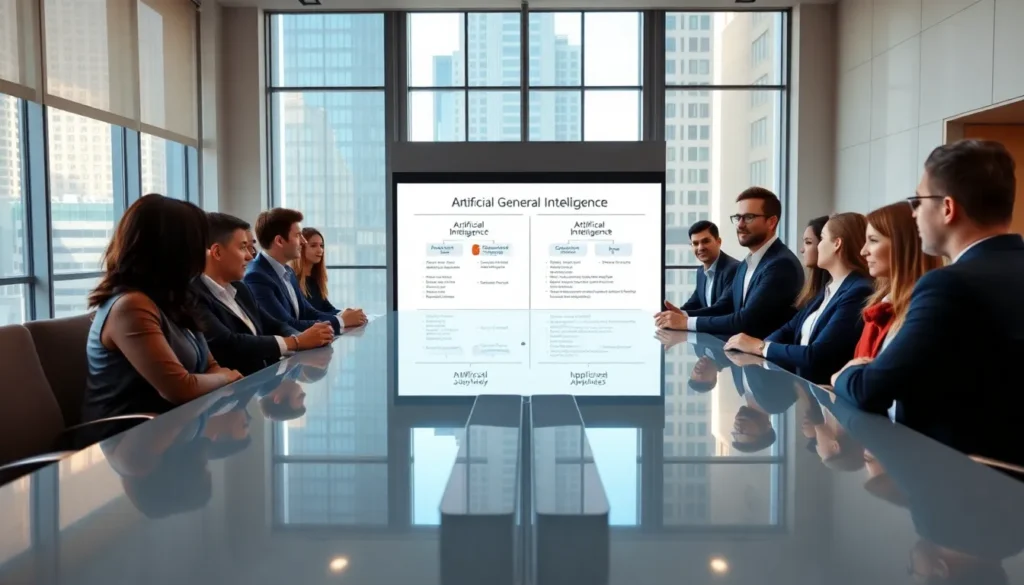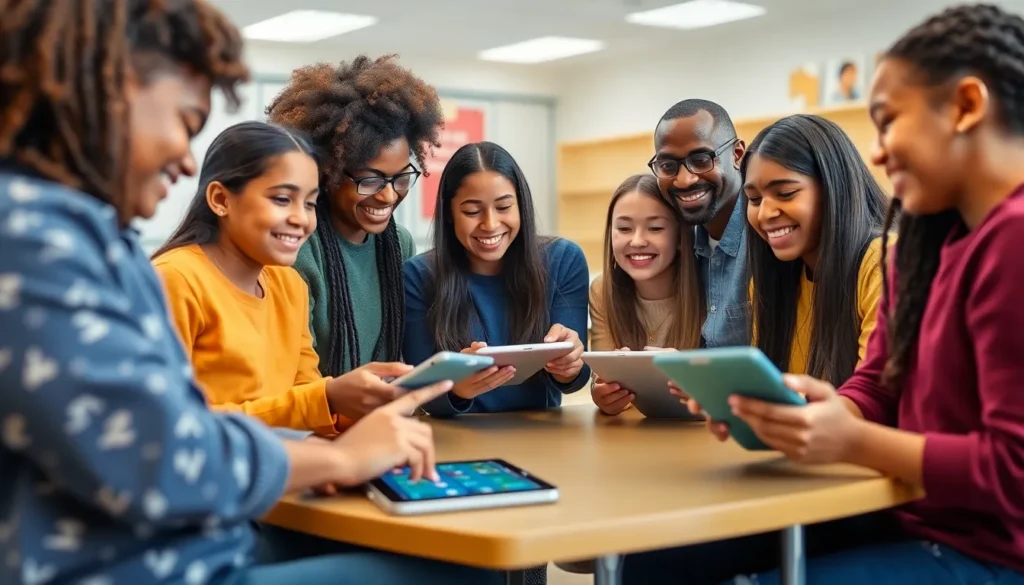Table of Contents
ToggleIn a rapidly evolving educational landscape, gamification has emerged as a powerful tool to enhance learning experiences. By incorporating game-like elements into traditional teaching methods, educators can motivate students and foster a more engaging environment. This approach not only appeals to students’ competitive nature but also encourages collaboration and problem-solving skills.
As technology continues to reshape how knowledge is delivered, gamification stands out for its ability to transform mundane tasks into exciting challenges. Students are more likely to stay focused and retain information when learning feels like a game. This article delves into the benefits of gamification in education and explores how it can revolutionize classrooms, making learning both fun and effective.
Overview of Gamification in Education
Gamification refers to the incorporation of game design elements into non-game contexts, such as education. This approach aims to enhance engagement, motivation, and learning outcomes by making educational experiences more interactive and enjoyable.
Definition of Gamification
Gamification in education utilizes elements from game design, such as points, badges, leaderboards, and challenges, to encourage student participation and improve learning. By incorporating these features, educators create an environment that mimics the dynamics of games, facilitating better engagement and deeper comprehension.
Importance of Gamification in Learning
Gamification plays a crucial role in enhancing learning experiences for several reasons:
- Increased motivation: Gamified elements boost student interest and drive, leading to higher participation rates.
- Enhanced collaboration: Group challenges and competitions foster teamwork, encouraging students to work together toward common objectives.
- Improved skills: Gamification encourages problem-solving, critical thinking, and creativity, equipping students with essential skills for future endeavors.
- Immediate feedback: Gamified assessments provide real-time feedback, helping students identify strengths and areas for improvement swiftly.
- Retention of information: Engaging game-like experiences enhance memory retention, allowing students to recall information more effectively.
By integrating these components, gamification creates dynamic and interactive learning environments that significantly improve educational outcomes.
Benefits of Gamification

Gamification offers numerous advantages that significantly enhance the educational experience. By implementing game-like elements, educators can create engaging environments that lead to improved learning outcomes.
Enhanced Engagement
Enhanced engagement occurs as students interact with game elements. Incorporating points, badges, and challenges motivates learners to participate actively. For instance, a study by the University of Colorado Boulder demonstrated that gamified lessons increased student interest by 50%. Increased interactivity encourages competition, collaboration, and social interaction among peers, promoting a sense of community in the classroom. Engaged students exhibit greater persistence in problem-solving tasks and an overall positive attitude towards learning.
Improved Retention
Improved retention is a direct outcome of integrating gamification into educational settings. Gamified activities often utilize immediate feedback, allowing students to assess their progress. Research by the National Training Laboratories indicates that retention rates can soar to 75% with active learning methods compared to 10% through traditional lecture formats. These statistics emphasize that game elements reinforce concepts through repetition and practical application. As learners take ownership of their progress and achievements, they develop a deeper understanding of the material, solidifying knowledge for long-term retention.
Challenges of Implementing Gamification
Gamification in education presents various challenges that can hinder its effectiveness. Addressing these challenges is essential for successful implementation.
Technical Barriers
Technical barriers often arise when integrating gamification into educational settings. Schools may lack the necessary infrastructure, such as reliable internet access or up-to-date devices. Some teachers may not possess the required technical skills to effectively implement gamified systems. Inadequate training can lead to improper use of gamification tools, diminishing their impact on learning outcomes. Additionally, reliance on proprietary software could limit flexibility and increase costs, creating further obstacles for educators.
Student Inclusivity
Student inclusivity represents another significant challenge in adopting gamification. Different learning styles and abilities necessitate the development of adaptable gamified content to accommodate diverse student needs. Students with disabilities may face barriers if gamification elements are not designed with accessibility in mind. Some students may become disengaged due to competitive elements that favor specific skill sets, potentially alienating those who struggle with certain tasks. Ensuring that gamification supports all students requires careful consideration and thoughtful design to promote equity in learning experiences.
Successful Examples of Gamification in Education
Various institutions have successfully implemented gamification strategies, demonstrating its effectiveness in enhancing student engagement and learning outcomes. The following examples illustrate how gamification has transformed educational experiences.
Case Studies
- Kahoot!: This platform uses quizzes and interactive games to promote active participation in the classroom. Educators report increased retention rates, with students retaining up to 75% of the material presented in a gamified format.
- Classcraft: This role-playing game integrates gamification principles into the classroom. Students collaborate to solve challenges, fostering teamwork and improving academic performance. At participating schools, student engagement levels rose by 30%.
- Duolingo: This language-learning app incorporates game mechanics, such as streaks and rewards, to motivate learners. Studies show that users learn vocabulary up to four times faster compared to traditional methods.
- Minecraft: Education Edition: This platform allows students to explore complex concepts in a virtual world. Educators use it to teach subjects like history and science through interactive gameplay, increasing enthusiasm for learning by over 40%.
Best Practices
- Set Clear Objectives: Establish specific, measurable goals for gamification initiatives. This ensures alignment between gameplay elements and educational outcomes.
- Incorporate Diverse Game Elements: Utilize a variety of elements like rewards, challenges, and leaderboards. This maintains student interest and caters to different learning preferences.
- Promote Collaboration: Create opportunities for group challenges and teamwork. Collaborative activities enhance communication skills and foster a sense of community among students.
- Provide Immediate Feedback: Use gamification to deliver instant feedback on student performance. This helps learners identify areas for improvement and encourages continuous engagement.
- Adapt to Diverse Learning Needs: Design inclusive gamified content that accommodates various abilities and learning styles. Customizing experiences promotes equity and maximizes student success.
Implementing these practices can enhance the effectiveness of gamification in educational settings, ensuring that it meets the needs of all students while delivering engaging and impactful learning experiences.
Conclusion
Gamification in education represents a transformative approach that enhances student engagement and learning outcomes. By integrating game-like elements into traditional teaching methods, educators can create dynamic environments that foster collaboration and critical thinking. The positive impact of gamification is evident in increased motivation and improved retention rates, making learning not only effective but also enjoyable.
While challenges exist in implementation, such as the need for adequate infrastructure and teacher training, the benefits far outweigh the obstacles. With thoughtful design and a focus on inclusivity, gamification has the potential to revolutionize classrooms and equip students with essential skills for the future. Embracing this innovative strategy can lead to significant advancements in educational practices and student success.







